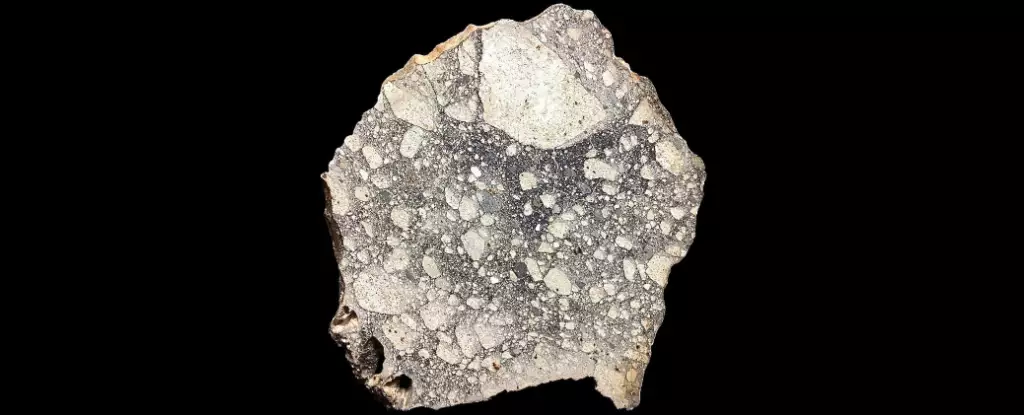The discovery of a 2.35-billion-year-old meteorite in Africa marks a monumental step forward in lunar science, challenging long-held beliefs about when and how the Moon’s volcanic activity waned. This small fragment, officially known as Northwest Africa 16286, exemplifies how sometimes the smallest objects hold the greatest secrets. Unlike traditional lunar samples collected through deliberate space missions, meteorites like NWA 16286 are touchstones for understanding the Moon’s deep past because of their unpredictable journey from lunar surface to Earth’s crust. Its unique chemical fingerprint reveals new details about the Moon’s internal heat engine and ongoing geological processes long after its initial formation.
This meteorite’s existence underscores the importance of meteorite studies in planetary science — a powerful reminder that insight can emerge from the sky rather than solely from costly lunar missions. The serendipity involved in its discovery offers a form of scientific democratization; it’s not always about complex, expensive exploration but about leveraging chance to broaden our knowledge horizons. In essence, meteorites serve as time capsules, often preserving a more comprehensive and diverse record of lunar history than remote lander samples.
Redefining the Timeline of Lunar Volcanism
Before this find, the lunar volcanic record was thought to be largely confined to the early history of the Moon, with most volcanic activity ceasing around 1 billion years ago. Now, with evidence suggesting volcanic processes persisted until nearly 2.35 billion years ago, this meteorite fundamentally reshapes our understanding of lunar geodynamics. It bridges the nearly billion-year gap between the oldest lunar volcanic samples collected during Apollo and Luna missions and more recent samples from China’s Chang’e 5 mission, revealing a continuity of volcanic activity that was previously unrecognized.
The implications are staggering: the Moon was not a quiescent, frozen-in-time relic after its formative years but an active player with sustained internal processes. This sustained activity hints at ongoing internal heat generation, likely powered by radioactive decay that persisted much longer than expected. It signifies that the lunar interior was more thermally dynamic, with implications for how we interpret the Moon’s evolution and its magnetic history. Such insights reshape models of lunar cooling and offer a more complex picture of its geological longevity.
Chemical Clues and Inner Workings
The chemical composition of NWA 16286 provides a treasure trove of details about the Moon’s interior. Its high potassium levels, titanium content, and resilient uranium-lead ratios point toward an origin deep within lunar lava flows that originated from an actively heating core. These chemical signatures suggest that even in its later stages, the Moon’s interior was still facilitating magmatic processes, driven perhaps by residual radioactive elements. The presence of olivine phyric basalt, with significant olivine crystals, offers insights into the cooling and crystallization history of lunar magmas.
What makes this meteorite particularly compelling is its geochemical fingerprint, revealing a process that is not only ancient but also ongoing for billions of years. It suggests that lunar volcanic activity was not a brief episode but a prolonged chapter in the Moon’s geological story. This conclusion fundamentally challenges the traditional view that planetary bodies naturally cool and become geologically inert over time. Instead, NWA 16286 indicates that internal heat persisted, possibly influencing the Moon’s magnetic field and surface geology over an extended period.
The Unpredictable Journey From Moon to Earth
Meteorites are inherently intriguing because their journey is often as dramatic as their geological story. NWA 16286’s impact history on the Moon reveals a violent past—evidence of shock veins and melted glass pockets point toward intense asteroid impacts. These cosmic collisions not only carved the Moon’s surface but also ejected fragments into space, which later traveled to Earth. The dating of the meteorite’s formation is complicated by this impact history, adding an element of uncertainty, but scientists estimate with reasonable confidence that it is around 2.35 billion years old.
This journey—a violent ejection from the lunar surface, followed by a long voyage through space—reminds us that planetary science can sometimes be a game of chance. The “serendipity” of discovery, as researchers put it, highlights how Earth’s most profound windows into distant worlds can be accidental yet invaluable. It champions the importance of meteorite collection and analysis, broadening our capability to understand worlds that are otherwise difficult or impossible to explore directly.
In sum, this meteorite unearths a new chapter in lunar history—one where volcanic processes persisted far longer than previously believed, driven by internal heat and complex geochemical processes. Its discovery exemplifies the profound potential embedded in extraterrestrial rocks that fall into our hands, urging us to reconsider the Moon’s history and, perhaps, the evolution of other planetary bodies.

